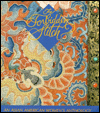| ABOUT THE BOOK
Synopsis
This is a collection of poetry, short
stories, art and book reviews bywomen of Chinese, Japanese, Indian, Pakistani,
Korean, Vietnamese, Malaysian and Philippine origins.
Reviews
From Marina Heung - Women's Review of Books
Underscoring
their fluid connectedness, the poems, stories and art works {in this volume}
form one seamless fabric with no thematic headings or obviouslogic in their
arrangement. (This editorial approach creates some awkwardness for the
reader, since the selections are grouped in the table of contents
bygenre . . . rather than in their strict order of appearance.) Coeditor
Mayumi Tsutakawa's intention, she
says, was to discover
'new voices and (plan) their escape from the fate of anonymity.' I realized
how successful {the} editorshad been in this aim when I found myself hungrily
reading each contributor's note. . . Each biographical note reads like
a life in miniature; each elicited a jolt of recognition or curiosity;
all hinted at stories waiting to be told.
From Library Journal
Seventy
Asian American women writing in English have contributed to this anthology
of poetry, stories, art, and reviews. All are emerging authors and artists,
some widely exhibited and published (e.g., Diana Chang), but none with
the fame of Maxine Hong Kingston or Bette Bao Lord. Their concerns touch
all women yet are overlaid with further concerns of being outsiders and
of facing divided duties to one's sex, one's country (old or new), and
oneself. The 16 reviews of better-known works (e.g., Cathy Song's Picture
Bride , Elaine Kim's Asian-American Literature ) are useful. A very attractive
book recommended for libraries specializing in Asian works.-- Kitty Chen
Dean, Nassau Coll., Garden City, N.Y.
From Carin Pratt - The Christian Science Monitor (Eastern edition)
The media
abound these days with tales of incredibly successful Asian-American immigrants.
. . . But what many of these stories don't reveal is the tremendous difficulty
many Asian-Americans have adapting to a nation and people so different
. . . from their own. . . . {This} anthology takes its title from a stunning
embroidery knot, so difficult to sew that tradition says Chinese artisans
often went blind attempting it. It is a symbol for the writing too long
forbidden to Asian-American women. This collection is the first of its
kind. That's an 'important indicator,' the editors say, 'of the level of
invisibility Asian-American women experience in this society.' There's
beautiful, touching writing here, but much of it is not happy. 'My heart
is clouded with unspoken sadness,' a poet writes. Unspoken, perhaps, but
now, not unwritten.
|


